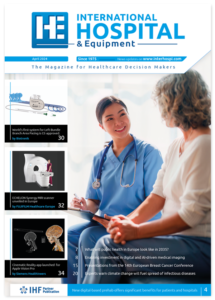More durable, versatile wearable for diabetes monitoring
Researchers at the University of Texas at Dallas have developed a wearable diagnostic biosensor that can detect three interconnected, diabetes-related compounds — cortisol, glucose and interleukin-6 — in perspired sweat for up to a week without loss of signal integrity. The team envisions that their wearable devices will contain a small transceiver to send data to an application installed on a cellphone.
"Type 2 diabetes affects so many people. If you have to manage and regulate this chronic problem, these markers are the levers that will help you do that," said Dr. Shalini Prasad, professor of bioengineering in the Erik Jonsson School of Engineering and Computer Science. "We believe we’ve created the first diagnostic wearable that can monitor these compounds for up to a week, which goes beyond the type of single use monitors that are on the market today."
Prasad and lead author Dr. Rujute Munje, a recent bioengineering PhD graduate, describe their wearable diagnostic biosensor that can detect three interconnected compounds — cortisol, glucose and interleukin-6 — in perspired sweat for up to a week without loss of signal integrity.
"If a person has chronic stress, their cortisol levels increase, and their resulting insulin resistance will gradually drive their glucose levels out of the normal range," said Prasad, Cecil H. and Ida Green Professor in Systems Biology Science. "At that point, one could become pre-diabetic, which can progress to type 2 diabetes, and so on. If that happens, your body is under a state of inflammation, and this inflammatory marker, interleukin-6, will indicate that your organs are starting to be affected."
Last October, Prasad and her research team confirmed they could measure glucose and cortisol in sweat. Several significant advances since then have allowed them to create a more practical, versatile tool.
"We wanted to make a product more useful than something disposable after a single use," Prasad said. "It also has to require only your ambient sweat, not a huge amount. And it’s not enough to detect just one thing. Measuring multiple molecules in a combinatorial manner and tracking them over time allows us to tell a story about your health."
One factor that facilitated their device’s progress was the use of room temperature ionic liquid (RTIL), a gel that serves to stabilize the microenvironment at the skin-cell surface so that a week’s worth of hourly readings can be taken without the performance degrading over time.
"This greatly influences the cost model for the device — you’re buying four monitors per month instead of 30; you’re looking at a year’s supply of only about 50," Prasad said. "The RTIL also allows the detector to interface well with different skin types — the texture and quality of paediatric skin versus geriatric skin have created difficulties in prior models. The RTIL’s ionic characteristics make it somewhat like applying moisturizer to skin."
Prasad’s team also determined that their biomarker measurements are reliable with a tiny amount of sweat — just 1 to 3 microliters, much less than the 25 to 50 previously believed necessary.
ScienceDaily
www.sciencedaily.com/releases/2017/06/170623131515.htm

